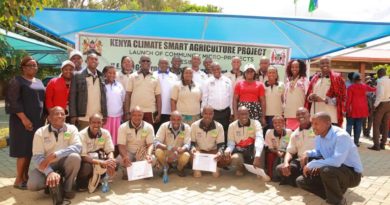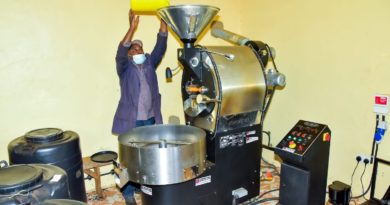KALRO Supports Communities to Improve Indigenous Chicken
Press Release
Kenya Agricultural and Livestock Research Organization has embarked on an Indigenous Chicken training programme to empower over (200,000) farmers in twenty counties including Siaya, Kakamega, Bomet, Kericho, Isiolo, Tharaka Nthii, Isiolo, Laikipia, Nyandarua, Machakos, Taita Taveta, Wajir, West Pokot, Busia, Baringo, Uasin Ngisho, Elgeyo Marakwet, Nyeri, Lamu, and Kisumu counties to improve productivity of indigenous chicken. These counties have selected indigenous chicken as a priority value chain through which to reduce poverty through increased incomes, improve food and nutritional security especially of women, children, youth and vulnerable groups.
KALRO scientists will train 400 trainers (ToTs) from the 20 counties (20 per county). The training is organized into seven (7) sessions of 10 days each. Each of the session will bring together 3 counties. The areas of training will focus on Technology, Information, Management and Practices (TIMPs) including, poultry housing & equipment, poultry management, production systems , feeding guidelines, feed formulation, production & utilization of insect protein, breeding and selection, processing and value addition, and waste management. In the next 10 days ToT from Kisumu and Kakamega will be trained at the Busia ATC on indigenous chicken TIMPs)
The poultry population in Kenya is estimated at 42 million birds of which, 82% are indigenous chicken, 9% commercial layers and 7.4% broilers. Other poultry species like ducks, geese, turkeys, pigeons, ostriches, guinea fowls and quails make up 1.6% of the poultry population.
The production of chicken in Africa has been dominated by village or backyard poultry, and are kept in extensive scavenging systems. Rearing of indigenous chicken is an integral part of the farming system in almost all households each keeping 10-20 chicken. The chicken are mainly owned by women, youth, children, landless farmers because they provide an income and are credited for their adaptability. The consumption of livestock products is crucial for the growth and development especially young children. Since more than 80% of the households keep indigenous chicken improving the productivity will address stunting in children and secure nutritional security.
Although the indigenous poultry dominate the sub-sector, they only produce 60% of the meat and 50% of the eggs consumed in this country. The challenges that cause the low productivity include low genetic potential, poor quality feeds, inadequate feeding and diseases.
Research developed TIMPs to overcome these production challenges. To address the low genetic potential, KALRO has developed a superior indigenous chicken breed which has a higher genetic potential. The KALRO improved chicken will produce between 230-250 eggs per year compared to about 80-100 eggs from the unimproved chicken. In order to make sure that the improved birds are available to farmers, KALRO has produced and distributed day old chicks worth KES 95,124,111 to farmers since 2016. Other KALRO research achievements in the poultry sub-sector include:
- Use of insect protein: KALRO in collaboration with other partners have developed Black soldier fly (BSF) meal and used the protein to formulate both chicken and pigs feeds. This recent research has shown insect protein could replace fish meal in poultry feeds and solve the availability and high cost problems associated with fish meal.
- Development of the Naivasha long feeder: feed constitutes about 70% of production costs and reducing wastage which could be as high as 20% is critical in reducing the cost of production and making our poultry products competitive. The Naivasha long feeder reduces waste by over 90%.
- Disease control is a major consideration in chicken production. Newcastle Disease (NCD), Infectious Basal Disease (IBD) and pox are the major diseases. In 2012, KALRO developed a thermostable NCD and will be working on IBD.
This week, KALRO scientists are training 40 trainers (County extension staff and service providers) from Kisumu and Kakamega Counties at Busia ATC. The indigenous chicken value chain which was identified as a priority by the two County Governments in the Kenya Climate Smart Agriculture Project (KSCAP), funded by the World Bank. KALRO is expected provide technologies and promote and facilitate adoption of agricultural technologies, innovations, management and practices (TIMPS) to achieve the CSA Climate smart technologies (CSA) triple-wins of increased productivity, enhanced resilience, and reduced greenhouse emissions. The direct beneficiaries of the (KSCAP), project are estimated at about 521,500 households of smallholder farmers, agro-pastoralists, and pastoralists. Approximately 163,350 households organized in about 4,950 Common Interest Groups (CIGs) and 18,150 households in 1,100 Vulnerable and Marginalized Groups (VMGs)27 will benefit from community CSA micro projects.
Eliud Kireger PhD. OGW
DIRECTOR GENERAL- KALRO



